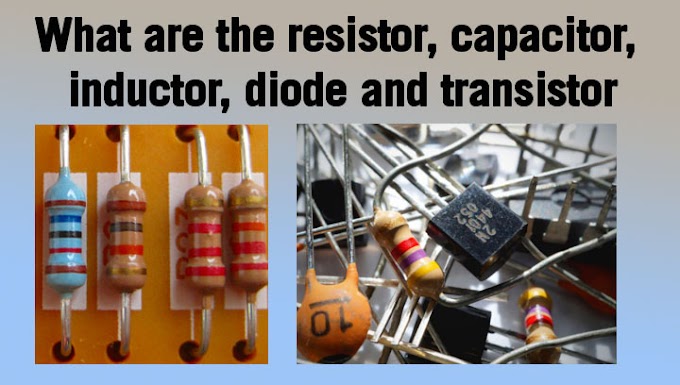What are electrolytic capacitors?
Electrolytic-CapacitorAn electrolytic capacitor is a type of capacitor that uses an electrolyte to achieve a larger capacitance than other capacitor types. An electrolyte is a liquid or gel containing a high concentration of ions. Almost all electrolytic capacitors are polarized, which means that the voltage on the positive terminal must always be greater than the voltage on the negative terminal. The benefit of large capacitance in electrolytic capacitors comes with several drawbacks as well. Among these drawbacks are large leakage currents, value tolerances, equivalent series resistance and a limited lifetime. Electrolytic capacitors can be either wet-electrolyte or solid polymer. They are commonly made of tantalum or aluminum, although other materials may be used. Supercapacitors are a special subtype of electrolytic capacitors, also called double-layer electrolytic capacitors, with capacitances of hundreds and thousands of farads. This article will be based on aluminum electrolytic capacitors. These have a typical capacitance between 1µF to 47mF and an operating voltage of up to a few hundred volts DC. Aluminum electrolytic capacitors are found in many applications such as power supplies, computer motherboards and many domestic appliances. Since they are polarized, they may be used only in DC circuits.
Electrolytic capacitors family tree
As to the basic construction principles of electrolytic capacitors, there are three different types: aluminum, tantalum, and niobium capacitors. Each of these three capacitor families uses non-solid and solid manganese dioxide or solid polymer electrolytes, so a great spread of different combinations of anode material and solid or non-solid electrolytes is available.
Charge principle
Like other conventional capacitors, electrolytic capacitors store the electric energy statically by charge separation in an electric field in the dielectric oxide layer between two electrodes. The non-solid or solid electrolyte in principle is the cathode, which thus forms the second electrode of the capacitor. This and the storage principle distinguish them from electrochemical capacitors or supercapacitors, in which the electrolyte generally is the ionic conductive connection between two electrodes and the storage occurs with statically double-layer capacitance and electrochemical pseudocapacitance.
Electrolytic capacitor definition
An electrolytic capacitor is a polarized capacitor that uses an electrolyte to achieve a larger capacitance than other capacitor types.
Reading the capacitance value
In the case of through-hole capacitors, the capacitance value as well as the maximum rated voltage is printed on the enclosure. A capacitor that has “4.7μF 25V“ printed on it has a nominal capacitance value of 4.7μF and a maximum voltage rating of 25 volts, which is never to be exceeded.
In the case of SMD (surface-mounted) electrolytic capacitors, there are two basic marking types. The first one clearly states the value in microfarads and the operating voltage. For example, using this approach, a 4.7 μF capacitor with an operating voltage of 25 volts would bear the marking “4.7 25V. In the other marking system, a letter is followed by three numbers. The letter represents the voltage rating according to the table below. The first two numbers represent the value in picofarads, while the third number is the number of zeroes to be added to the first two. For example, a 4.7 μF capacitor with a voltage rating of 25 volts would bear the marking E476. This translates to 47000000 pF = 47000 nF = 47 μF.
Capacitance drift
The capacitance of electrolytic capacitors drifts from the nominal value as time passes, and they have large tolerances, typically 20%. This means that an aluminum electrolytic capacitor with a nominal capacitance of 47µF is expected to have a measured value of anywhere between 37.6µF and 56.4µF. Tantalum electrolytic capacitors can be made with tighter tolerances, but their maximum operating voltage is lower so they cannot be always used as a direct replacement.
Polarity and safety
Due to the construction of electrolytic capacitors and the characteristics of the electrolyte used, electrolytic capacitors must be forward biased. This means that the positive terminal must always be at a higher voltage than the negative terminal. If the capacitor becomes reverse-biased (if the voltage polarity on the terminals is reversed), the insulating aluminum oxide, which acts as a dielectric, might get damaged and start acting as a short circuit between the two capacitor terminals. This can cause the capacitor to overheat due to the large current running through it. As the capacitor overheats, the electrolyte heats up and leaks or even vaporizes, causing the enclosure to burst. This process happens at reverse voltages of about 1 volt and above. To maintain safety and prevent the enclosure from exploding due to high pressures generated under overheating conditions, a safety valve is installed in the enclosure. It is typically made by making a score in the upper face of the capacitor, which pops open in a controlled manner when the capacitor overheats. Since electrolytes may be toxic or corrosive, additional safety measures may need to be taken when cleaning after and replacing an overheated electrolytic capacitor.
There is a special type of electrolytic capacitor for AC use, which is designed to withstand reverse polarisation. This type is called the non-polarized or NP type.
Construction and properties of electrolytic capacitors
Aluminum electrolytic capacitors are made of two aluminum foils and a paper spacer soaked in electrolytes. One of the two aluminum foils is covered with an oxide layer, and that foil acts as the anode, while the uncoated one acts as a cathode. During normal operation, the anode must be at a positive voltage in relation to the cathode, which is why the cathode is most commonly marked with a minus sign along the body of the capacitor. The anode, electrolyte-soaked paper and cathode are stacked. The stack is rolled, placed into a cylindrical enclosure and connected to the circuit using pins. There are two common geometries: axial and radial. Axial capacitors have one pin on each end of the cylinder, while in the radial geometry, both pins are located on the same end of the cylinder.
Electrolytic capacitors have a larger capacitance than most other capacitor types, typically 1µF to 47mF. There is a special type of electrolytic capacitor, called a double-layer capacitor or a supercapacitor, whose capacitance can reach thousands of farads. The capacitance of an aluminum electrolytic capacitor is determined by several factors, such as the plate area and the thickness of the electrolyte. This means that a large capacitance capacitor is bulky and large in size.
It is worth mentioning that electrolytic capacitors made using old technology didn't have a very long shelf life, typically only a few months. If left unused, the oxide layer deteriorates and has to be rebuilt in a process called capacitor reforming. This can be performed by connecting the capacitor to a voltage source through a resistor and slowly increasing the voltage until the oxide layer has been fully rebuilt. Modern electrolytic capacitors have a shelf life of 2 years or more. If the capacitor is left unpolarized for longer periods, they must be reformed prior to use.
Applications for electrolytic capacitors
There are many applications that do not need tight tolerances and AC polarization but require large capacitance values. They are commonly used as filtering devices in various power supplies to reduce the voltage ripple. When used in switching power supplies, they are often the critical component limiting the usable life of the power supply, so high-quality capacitors are used in this application.
They may also be used in input and output smoothing as a low-pass filter if the signal is a DC signal with a weak AC component. However, electrolytic capacitors do not work well with large amplitude and high-frequency signals due to the power dissipated at the parasitic internal resistance called equivalent series resistance (ESR). In such applications, low-ESR capacitors must be used to reduce losses and avoid overheating.
A practical example is the use of electrolytic capacitors as filters in audio amplifiers whose main goal is to reduce mains hum. The mains hum is a 50Hz or 60Hz electrical noise induced from the mains supply which would be audible if amplified.
An electrolytic capacitor is a sort of capacitor that utilizes an electrolyte to obtain greater capacitance than the other types of capacitors. An electrolyte is a gel or fluid in which the concentration of ions is very high. An electrolytic capacitor is a general term used for three different capacitor family members:
- Aluminum electrolytic capacitors
- Tantalum electrolytic capacitors
- Niobium electrolytic capacitors
Applications
- "Dry" aluminum capacitor
- Tantalum capacitors
- Niobium capacitors













